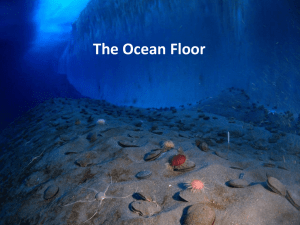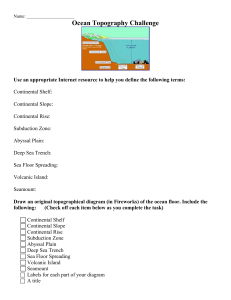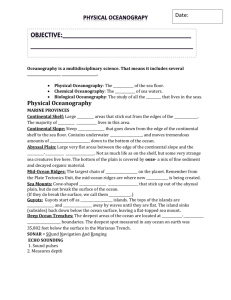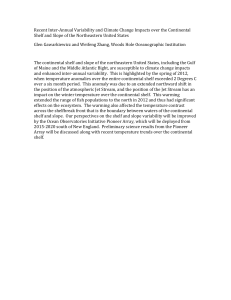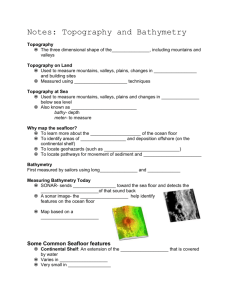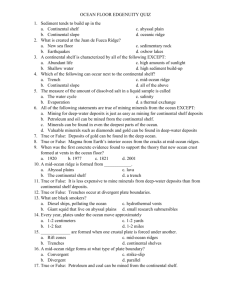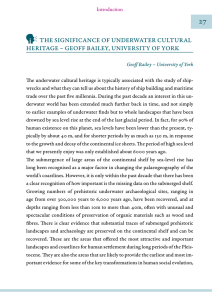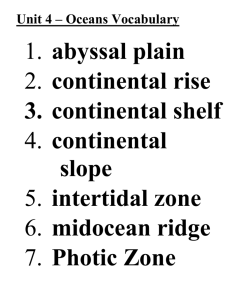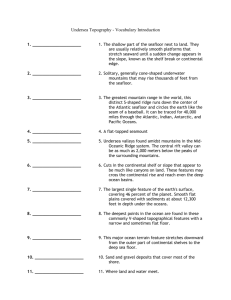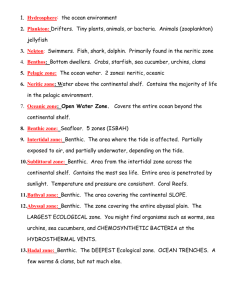The Earth and it`s Layers The Earth`s Structure A. Earth consists of a
advertisement
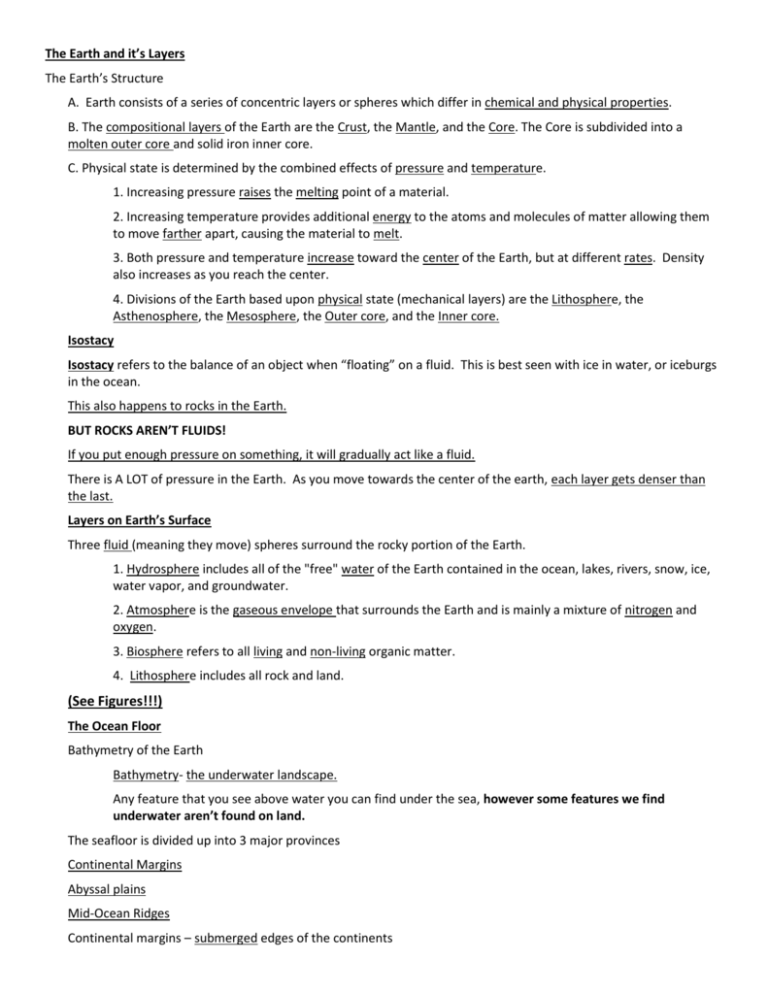
The Earth and it’s Layers The Earth’s Structure A. Earth consists of a series of concentric layers or spheres which differ in chemical and physical properties. B. The compositional layers of the Earth are the Crust, the Mantle, and the Core. The Core is subdivided into a molten outer core and solid iron inner core. C. Physical state is determined by the combined effects of pressure and temperature. 1. Increasing pressure raises the melting point of a material. 2. Increasing temperature provides additional energy to the atoms and molecules of matter allowing them to move farther apart, causing the material to melt. 3. Both pressure and temperature increase toward the center of the Earth, but at different rates. Density also increases as you reach the center. 4. Divisions of the Earth based upon physical state (mechanical layers) are the Lithosphere, the Asthenosphere, the Mesosphere, the Outer core, and the Inner core. Isostacy Isostacy refers to the balance of an object when “floating” on a fluid. This is best seen with ice in water, or iceburgs in the ocean. This also happens to rocks in the Earth. BUT ROCKS AREN’T FLUIDS! If you put enough pressure on something, it will gradually act like a fluid. There is A LOT of pressure in the Earth. As you move towards the center of the earth, each layer gets denser than the last. Layers on Earth’s Surface Three fluid (meaning they move) spheres surround the rocky portion of the Earth. 1. Hydrosphere includes all of the "free" water of the Earth contained in the ocean, lakes, rivers, snow, ice, water vapor, and groundwater. 2. Atmosphere is the gaseous envelope that surrounds the Earth and is mainly a mixture of nitrogen and oxygen. 3. Biosphere refers to all living and non-living organic matter. 4. Lithosphere includes all rock and land. (See Figures!!!) The Ocean Floor Bathymetry of the Earth Bathymetry- the underwater landscape. Any feature that you see above water you can find under the sea, however some features we find underwater aren’t found on land. The seafloor is divided up into 3 major provinces Continental Margins Abyssal plains Mid-Ocean Ridges Continental margins – submerged edges of the continents Made up of deposited material from land erosion and is again divided into 3 zones: Continental shelf, Continental slope , Continental rise The Continental shelf If you have ever waded out into the water at the beach you have stood on the cont. shelf Extends out to an average depth of 130m and terminates at the shelf break Shelf break – where the seafloor begins to get steeper 1-4 degrees The Continental slope 1-4 degrees downward slope, Extends out until water is about 2-3 km deep (kilo- 1000) Parts of this steep slope are cut by deep canyons (submarine canyons) Continental rise Vast sedimentary plane, About 1 degree slope, About 4 km deep, Joins with the Abyssal plains Deep Ocean Providence Located between the Continental Margins and the Mid-Ocean Ridges Mostly flat Abyssal plains, flat plains to .5 degree slopes, 3-5 km deep, Some of the flattest places on Earth Mid-Ocean Ridge Normally found in the middle of the ocean where sea-floor spreading occurs Has a rift valley (indention on the top of the mountain chain) where volcanic activity occurs Not all oceans have a mid-ocean ridge Other Features Trench – very deep valley found in some oceans, where seafloor is pulled under into the mantle Guyot – Flat topped mountain underwater Seamount – underwater mountain Island – Where land rises up out of the water away from the continental plate Scientific Notation, The solution for big and small numbers Represents REALLY big and small numbers through powers of ten. Powers like 102, 103, 107 5 billion = 5,000,000,000 0.000005 looks like 5 x 10-6 Examples: 450000 = 4.5 x 105 230 = 2.3 x 102 4586000 = 4.586 x 106 Examples: 0.000045 = 4.5 x 10-5 0.023 = 2.3 x 10-2 0.000004586 = 4.586 x 10-6 This has 9 places after the 5 In scientific notation, this is 5 x 109 Small numbers get negative signs!

